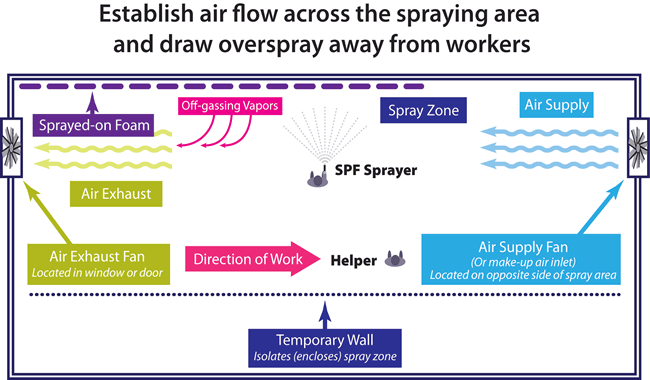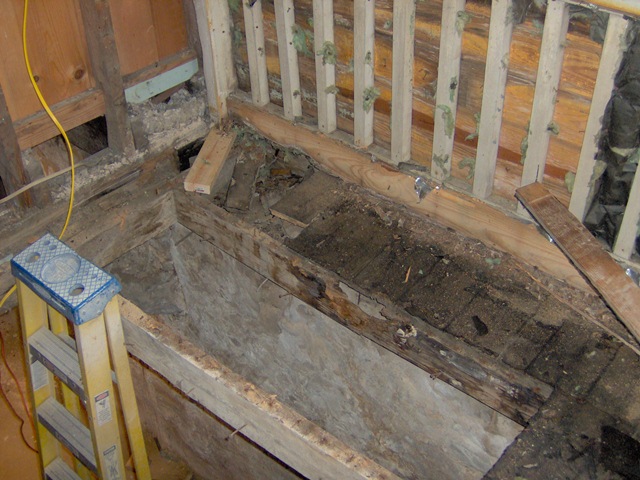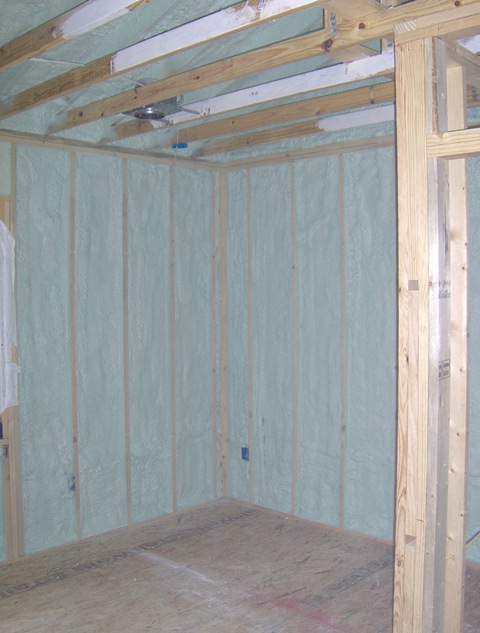 When one is renovating their homes, one has to deal with a simple fact of life – dust is going to get kicked up. The issue doesn’t simply stop with dust though, as asbestos, mold, lead, animal droppings and other items might also be involved. To top that off one also has all the fumes or VOC’s that are released from new paint, adhesives, fixtures, & finishes.
When one is renovating their homes, one has to deal with a simple fact of life – dust is going to get kicked up. The issue doesn’t simply stop with dust though, as asbestos, mold, lead, animal droppings and other items might also be involved. To top that off one also has all the fumes or VOC’s that are released from new paint, adhesives, fixtures, & finishes.
For those contemplating or doing retrofitting work (e.g. a new HVAC system, air sealing, insulation, etc…) the issues are compounded. Not only do we have those items above, but we also find ourselves installing products normally installed on new homes when it is still relatively open and unoccupied.
While there are numerous ways of minimizing & controlling dust, there is only one way to really deal with VOC’s & that is to ventilate those areas being worked on. Not only does this protect the occupants but also those working.
Initial Setup:
The days of simply opening up a window & setting up a box fan with a filter won’t fly in most cases. Many companies are now turning to negative pressure machines with HEPA filtration to help prevent containments from getting into the house or exhausted outside.
- Try to minimize & contain the areas being worked on (Setting up containment)
- Place warning signs &/or caution tape up as needed
- Turn off any ignition sources in the areas being worked on
- Turn off or seal up the HVAC system components in the area being worked on
 Working in attics can pose a few interesting problems especially if there is ductwork located in them. Hopefully all the needed air-sealing work was completed along with sealing the ducts but even then problems can arise. We fully recommend that not only is the system turned off but all the registers and returns should be sealed and the system pressurized either with a duct blaster or large fan. This will help prevent any materials or dust from getting into or sucked into the HVAC system. (10 tips for working safely in the attic) Working in attics can pose a few interesting problems especially if there is ductwork located in them. Hopefully all the needed air-sealing work was completed along with sealing the ducts but even then problems can arise. We fully recommend that not only is the system turned off but all the registers and returns should be sealed and the system pressurized either with a duct blaster or large fan. This will help prevent any materials or dust from getting into or sucked into the HVAC system. (10 tips for working safely in the attic) |
Fan Layout & Use:
While the days of slapping a filter on a box fan might not fly anymore, slapping a generic AC filter before the exhaust source can help extend the life of the HEPA filter by catching larger items
- The exhaust source should be placed as close to the work area and directed to draw and exhaust the air away from the work area
- Exhaust air should not be directed where others maybe working, playing or towards any air intakes of nearby buildings
- The work area should always be kept under negative pressure which will help prevent containments from escaping
- One should generally start working as close to the exhaust fan as possible & work out
- Unless you are working with high pressure spray foams, paint sprayers, or will be creating a ton of dust an intake source of air is generally not needed
 The SPFA, OSHA, EPA, NIOSH, and numerous other organizations have been working on creating ventilation procedures for the Spray Foam Industry which includes the picture above. The SPFA, OSHA, EPA, NIOSH, and numerous other organizations have been working on creating ventilation procedures for the Spray Foam Industry which includes the picture above. |
Completion:
- For Spray Foam, epoxy’s, etc… check the MSDS, instructions &/or with the manufacturer to see how long until it is safe to re-enter
- If someone must enter before that time has elapsed they should be wearing appropriate gear
- Leave the ventilation running during this time & during cleanup to help flush any contaminants from the area.
- In dusty conditions it takes up to an hour for it to settle & sweeping is the worst thing you can do – use a shop vac (preferably HEPA) or consider wet sweeping
- If the house is occupied by someone with asthma or chemical sensitivities, you might want to consider doubling that time frame or more.
Just remember one of the most famous mantras in the home performance industry; “Do it Right – Seal it Tight & Ventilate it Right” applies to more than just the end product.


